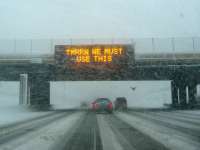(Social Networking Utilities and the Argument for Physical Space
(Twitter Carrier Pigeon)
As social networking utilities continue to provide open forums for users to communicate, protest and organize, they lack the necessity for a physical space. This is their virtue: the application’s a-spatiality interfaces with vast seas of latent roaming information. Restless mobile phones are constantly communicating; they are appendages functioning as social extremities with minute amplifiers that speak in private. In contrast, political regimes traditionally use public space to represent power, their performances upholding authority over perception, territory and resources. The privacy of a mobile/ laptop screen both creates and inhibits radical online communities and resources from reaching this type of visibility and occupation, unless it spatializes as effectively as the Tahrir Square protests recently did. We have yet to witness a war that territorializes the flatness of a Facebook page or the ownership of a Twitter thread. If information storage and access to users is the resource, than the seemingly infinite capacity of server space is a distant land battle, one to visit a few years from now. Granted these applications have garnered spectacular intellectual property litigations, however, my argument lies in the claim that these current social utilities can supplement space but not replace the need for it to realize resistance.
How do twitter and other open source (semi-public) messaging applications function when they are extracted from the personal computer screen and strewn about the landscape?
Intrigued by the role social media played in the Iranian elections of June 2009, I began working on a speculative proposal that combines carrier pigeons with twitter feeds. When the carrier pigeon is within close range of a digital display sign (5-10 feet) the electronic pack it is carrying interrupts the sign’s text with a live feed from the Twitter Iran# election thread *. Groups of pigeons are assigned to particular threads the most current post being displayed for only as long as the homing pigeon is within range of the sign. I have not developed the technology to execute this nor do I intend to, rather I have been viewing it as a conceptual project, one that focuses on the social and political implications of its potential realization. (* In light of the recent protests in Northern Africa and the Middle East, one could imagine attaching different country’s threads to different groups of pigeons.)
Attachments:
Image 01: Minneapolis, Minnesota, USA. Interruption of digital display sign on I-94 South. Image 02: Somerset County, Pennsylvania, USA. Interruption of digital display sign on Route 601 North.
-Seth Marshall Weiner 2011
(Social Networking Utilities and the Argument for Physical Space
(Twitter Carrier Pigeon)
As social networking utilities continue to provide open forums for users to communicate, protest and organize, they lack the necessity for a physical space. This is their virtue: the application’s a-spatiality interfaces with vast seas of latent roaming information. Restless mobile phones are constantly communicating; they are appendages functioning as social extremities with minute amplifiers that speak in private. In contrast, political regimes traditionally use public space to represent power, their performances upholding authority over perception, territory and resources. The privacy of a mobile/ laptop screen both creates and inhibits radical online communities and resources from reaching this type of visibility and occupation, unless it spatializes as effectively as the Tahrir Square protests recently did. We have yet to witness a war that territorializes the flatness of a Facebook page or the ownership of a Twitter thread. If information storage and access to users is the resource, than the seemingly infinite capacity of server space is a distant land battle, one to visit a few years from now. Granted these applications have garnered spectacular intellectual property litigations, however, my argument lies in the claim that these current social utilities can supplement space but not replace the need for it to realize resistance.
How do twitter and other open source (semi-public) messaging applications function when they are extracted from the personal computer screen and strewn about the landscape?
Intrigued by the role social media played in the Iranian elections of June 2009, I began working on a speculative proposal that combines carrier pigeons with twitter feeds. When the carrier pigeon is within close range of a digital display sign (5-10 feet) the electronic pack it is carrying interrupts the sign’s text with a live feed from the Twitter Iran# election thread *. Groups of pigeons are assigned to particular threads the most current post being displayed for only as long as the homing pigeon is within range of the sign. I have not developed the technology to execute this nor do I intend to, rather I have been viewing it as a conceptual project, one that focuses on the social and political implications of its potential realization. (* In light of the recent protests in Northern Africa and the Middle East, one could imagine attaching different country’s threads to different groups of pigeons.)
Attachments:
Image 01: Minneapolis, Minnesota, USA. Interruption of digital display sign on I-94 South. Image 02: Somerset County, Pennsylvania, USA. Interruption of digital display sign on Route 601 North.
-Seth Marshall Weiner 2011

